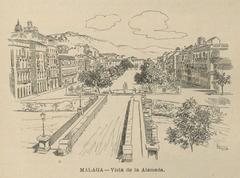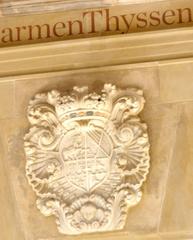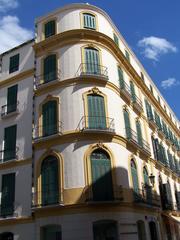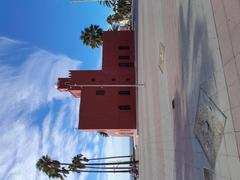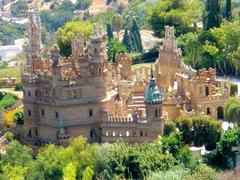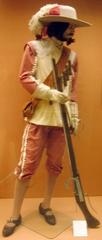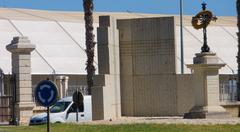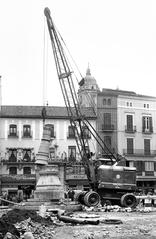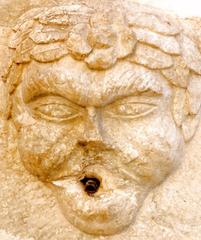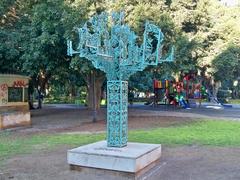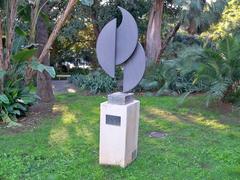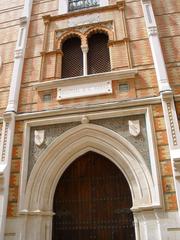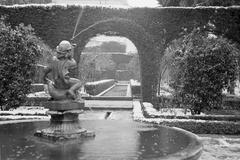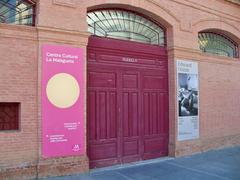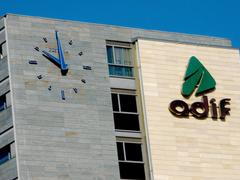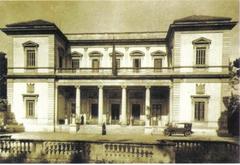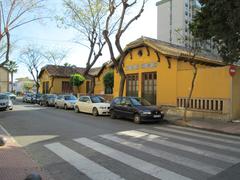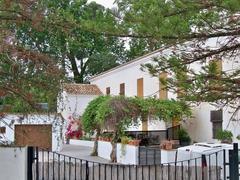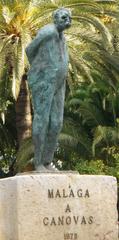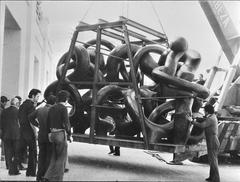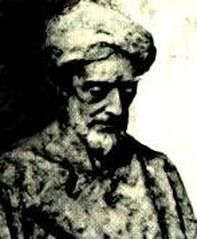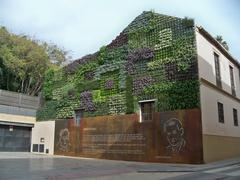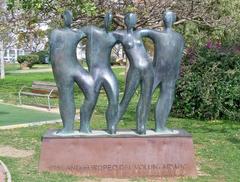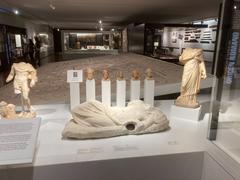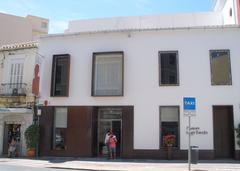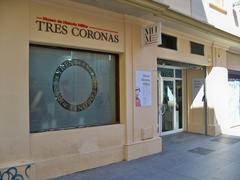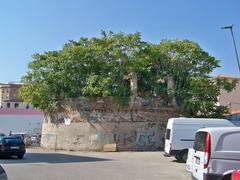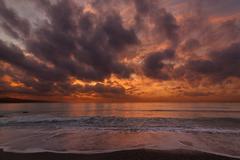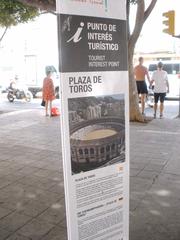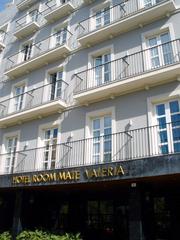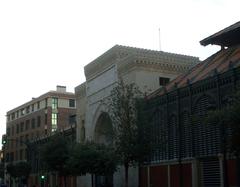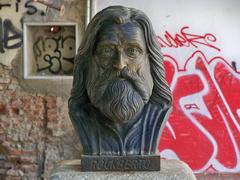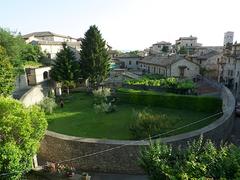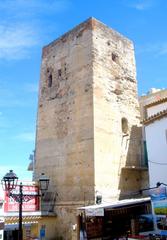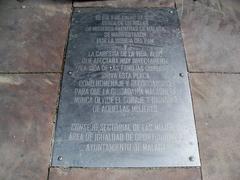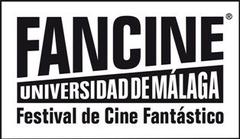Monument to Santa María de la Victoria: Visiting Hours, Tickets, and Travel Guide – Málaga, Spain
Date: 14/06/2025
Introduction
The Monument to Santa María de la Victoria, located in the heart of Málaga, is more than a religious sanctuary; it is a living symbol of the city’s history, faith, and artistic achievement. Erected on the very site where the Catholic Monarchs camped during the Reconquista siege of 1487, this Baroque masterpiece not only commemorates a pivotal moment in Spanish history but also serves as the spiritual heart of Málaga. Home to the city’s patroness, Santa María de la Victoria, the sanctuary attracts pilgrims, art lovers, and history enthusiasts alike.
With free entry to its main areas and an inviting program of guided tours, the monument is accessible to all. Its proximity to Málaga’s historic center and other major attractions, such as the Alcazaba and the Picasso Museum, makes it a must-visit destination for anyone interested in Andalusian culture. This guide provides detailed information about the monument’s history, visiting hours, ticketing, architectural highlights, and practical travel tips—ensuring you make the most of your visit (andaluciamia.com, malagaturismo.com, santamariadelavictoria.es, Visita Málaga).
Contents
- Introduction
- Historical and Cultural Context
- Architectural and Artistic Significance
- Visiting Information (Hours, Tickets, Tours)
- Events and Local Traditions
- Visitor Tips and Accessibility
- Nearby Attractions
- Frequently Asked Questions (FAQ)
- Conclusion
- References
Historical and Cultural Context
The Reconquest and Foundation
Santa María de la Victoria’s origins are inseparable from the 1487 conquest of Málaga by Queen Isabella I of Castile and King Ferdinand II of Aragon. After a decisive siege, the Catholic Monarchs attributed their victory to the Virgin Mary, under the title of Santa María de la Victoria. In her honor, a chapel was erected on the monarchs’ former camp site, housing an image of the Virgin—a gift from Emperor Maximilian I of Austria.
Over the centuries, the chapel evolved into a grand sanctuary, with significant Baroque enhancements in the 17th century. The devotion to Santa María de la Victoria became central to Málaga’s civic and religious life, culminating in her designation as the city’s patroness in 1867. Her feast day on September 8th remains a major annual event (malagaturismo.com).
Architectural and Artistic Significance
The Basilica and Camarín Tower
The current sanctuary, rebuilt between 1693 and 1700, is an outstanding example of Andalusian Baroque. Its most remarkable feature is the camarín tower: an octagonal, richly decorated chamber behind the main altar, designed to display the revered image of Santa María de la Victoria. The camarín is accessed via a symbolic passage from the crypt (evoking penitence) to the upper chamber (representing spiritual elevation).
The Crypt of the Counts of Buenavista
Beneath the sanctuary lies the crypt, commissioned by the Counts of Buenavista. It is a striking funerary space, adorned with black walls, white plaster skeletons, and allegorical figures—a Baroque meditation on mortality. The crypt, camarín, and main altar together tell a story of spiritual ascent, from earthly suffering to divine union (Wikipedia).
Artistic Treasures
The sanctuary houses:
- The statue of Santa María de la Victoria—possibly a 16th-century Sevillian work or a royal commission—enthroned and crowned, holding the Christ Child and a scepter.
- Baroque altarpieces, including the main altar with gilded woodwork, twisted columns, and scenes from the life of San Francisco de Paula.
- Sculptures by artists such as José Micael de Alfaro, Jerónimo Gómez, and Fernando Ortiz.
- 16th-century Sevillian ceramics and Mudéjar-style mural paintings.
- A museum displaying the Virgin’s trousseau, jewels, and religious artifacts (Viajeros en Corto Málaga).
Visiting Information: Hours, Tickets, and Tours
Location and Access
- Address: Plaza del Santuario, 8, 29013 Málaga, Spain
- How to Get There: Short walk from Plaza de la Merced; accessible by local bus or taxi. Limited street parking nearby (Visit Costa del Sol).
Opening Hours (as of June 2025)
- Tuesday to Friday: 10:00 AM – 1:00 PM
- Saturday and Sunday: 10:00 AM – 1:30 PM
- Closed on Mondays (Visita Málaga)
Note: Liturgical services and special events may alter these times—consult the official website for updates.
Tickets
- Basilica and Gardens: Free admission.
- Museum and Crypt: Modest fee (typically €3–5); discounts may apply for groups, pensioners, or students.
- Guided Tours: Available in Spanish (with occasional English or French tours); book onsite or via the official website.
Visitor Services
- Accessibility: Main areas and plaza are wheelchair accessible; the crypt has limited access due to stairs.
- Restrooms: Available onsite.
- Photography: Allowed in most areas, but restricted during services and in the crypt; flash and tripods usually not permitted.
- Souvenirs: Modest religious items are available for purchase.
Events and Local Traditions
Annual Festivities
- Feast of Santa María de la Victoria (September 8): The city’s main religious celebration, featuring special masses, processions, and cultural events.
- Málaga Feria (August): The sanctuary is integral to the opening ceremonies, blending local tradition with religious observance (andaluciamia.com).
- 2025 Special Celebrations: 150th anniversary of the Real Hermandad de Santa María de la Victoria, with extraordinary processions and a thanksgiving mass (Palio de Plata).
Visitor Tips and Accessibility
- Arrive Early: Mornings are quieter and more contemplative.
- Dress Modestly: Shoulders and knees should be covered, especially during religious ceremonies.
- Language: Most signage is in Spanish; English-speaking guides may be available.
- Accessibility: Ramps provide access to the main sanctuary and plaza; the crypt may be difficult for wheelchair users.
- Combine Visits: Pair with the Alcazaba, Picasso Museum, or other nearby Málaga sites for a full cultural itinerary.
Nearby Attractions
- Alcazaba Fortress: Iconic Moorish palace, 10-minute walk.
- Picasso Museum: Celebrating Málaga’s most famous artist, also nearby.
- Roman Theatre: Ancient archaeological site close to the city center.
(Museos de Málaga, Andalucia.com)
Frequently Asked Questions (FAQ)
Q: What are the visiting hours?
A: Tuesday to Friday, 10:00 AM–1:00 PM; Saturday and Sunday, 10:00 AM–1:30 PM. Closed Mondays.
Q: Is there a ticket fee?
A: Entry to the basilica is free; museum and crypt require a modest fee.
Q: Are guided tours available?
A: Yes, in Spanish and sometimes English. Check availability on the official website.
Q: Is the site accessible for people with disabilities?
A: Main areas are accessible; the crypt has limited access.
Q: Can I take photos inside?
A: Yes, except during services or in the crypt. Respect posted signs.
Conclusion
Santa María de la Victoria stands as one of Málaga’s most significant historical and spiritual landmarks—a monument where history, faith, and art converge. Its Baroque architecture, symbolic camarín tower, and evocative crypt offer a unique glimpse into Andalusia’s past. With generous opening hours, free main entry, and rich cultural programming, the sanctuary welcomes all who seek inspiration, beauty, or contemplation.
Plan your visit using the resources above, and consider enhancing your experience by downloading the Audiala app for guided tours and immersive content on Málaga’s heritage. For the latest updates, check the official website and follow local tourism channels.
References
- Andalucia Mia
- Malagaturismo
- Real Hermandad de Santa María de la Victoria
- Santuario de la Victoria on GPSmyCity
- Visita Málaga
- Museos de Málaga
- Palio de Plata
